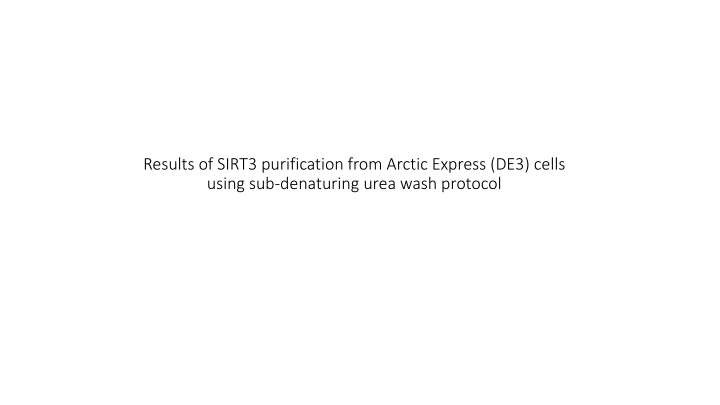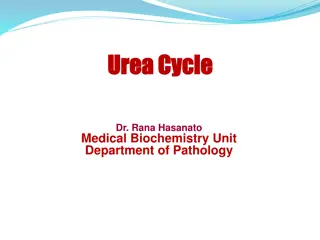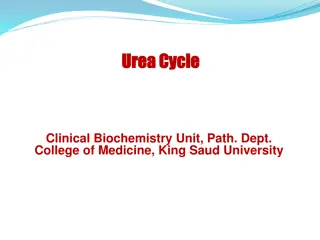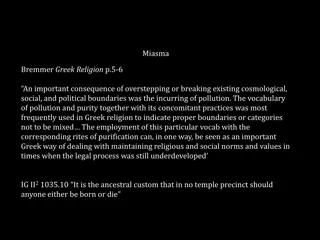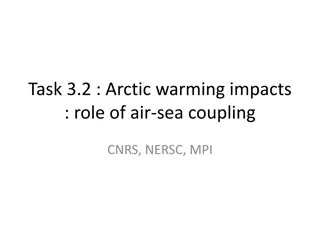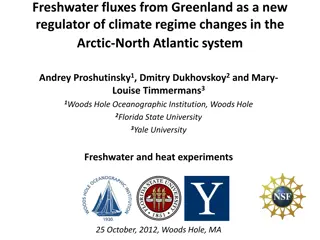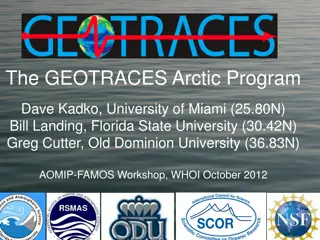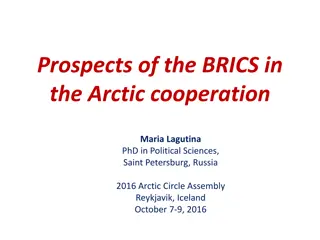Results of SIRT3 Purification from Arctic Express Cells using Urea Wash Protocol
The purification protocol for SIRT3 from Arctic Express cells involved a series of steps utilizing urea washes to remove Cpn60. Two urea wash runs showed effective removal of Cpn60, with greater efficacy observed with 2M urea compared to 1M urea. The gel results indicated successful elimination of Cpn60, validating the method's efficiency in purifying SIRT3.
Uploaded on Sep 07, 2024 | 2 Views
Download Presentation

Please find below an Image/Link to download the presentation.
The content on the website is provided AS IS for your information and personal use only. It may not be sold, licensed, or shared on other websites without obtaining consent from the author.If you encounter any issues during the download, it is possible that the publisher has removed the file from their server.
You are allowed to download the files provided on this website for personal or commercial use, subject to the condition that they are used lawfully. All files are the property of their respective owners.
The content on the website is provided AS IS for your information and personal use only. It may not be sold, licensed, or shared on other websites without obtaining consent from the author.
E N D
Presentation Transcript
Results of SIRT3 purification from Arctic Express (DE3) cells using sub-denaturing urea wash protocol
Purification protocol for Sirt3 from Arctic Express (DE3) cells: adapted from Belval et al (2015). Lysis-Equilibration-Wash (LEW) buffer: 50 mM NaH2PO4, 300 mM NaCl, 10 mM imidazole pH 8.0 Wash 2 buffer: 20 mM Tris-Cl, 1,2 and 3 M urea, pH 6.8 (no urea in case of control) Elution buffer: LEW buffer with 300 mM imidazole, pH 8.0 Steps: 1) Frozen cells (from one batch of 200 ml culture) thawed and resuspended in minimal volume of LEW buffer. Cells lysed by sonication (5 x 5 sec pulses @ 70% amplitude, 1 min cold incubation b/w pulses). Centrifugation at 13.3 x g for 20 min at 4 C. Supernatant loaded on to 1 ml His-GraviTrap column pre-equilibrated with LEW buffer. After loading, column washed with 10 column volumes (cv) of LEW buffer. Column then washed with 10 cv of Wash 2 buffer. Samples eluted with Elution buffer as 250 ul elutions. 2) 3) 4) 5) 6) 7) A fast and simple method to eliminate Cpn60 from functional recombinant proteins produced by E. coli Arctic Express; Belval et al; Protein Expression and Purification 109 (2015) 29 34
2M Urea wash Run 1 2M urea P = pellet after cell lysis/centrifugation S = supernatant/sample loaded on column FT = flow-through W1 = wash 1 L = protein marker W2 = wash 2 E = elution Control P S FT W1 L W2 E1 E2 E3 E4 E5 W2 E1 E2 E3 E4 E5 Cpn60 Cpn60 Present in wash Absent in elutions As seen in the gel (comparing lanes W2 and E5 in both control and 2M urea), the Cpn60 band is removed after 2M urea wash. 70 60 50 Need to repeat the experiment with larger amount of sample/cells to get clearer bands. 30 Sirt3
2M Urea wash Run 2 S = supernatant/sample loaded on column FT = flow-through W1 = wash 1 L = protein marker W2 = wash 2 E = elution W2 E5 E6 E1 E2 E3 E4 S FT W1 L E7 E8 E9 E10 Cpn60 Cpn60 almost removed from the elutions Results consistent with Run 1 70 Amount of Cpn60 in the elutions greatly diminished from the 2M urea wash (< 10%). 60 50 All the other bands correspond to proteins bound non-specifically to the column and can be removed by washing with imidazole containing buffer. Sirt3 30
1M Urea wash S = supernatant/sample loaded on column FT = flow-through W1 = wash 1 L = protein marker W2 = wash 2 E = elution E3 E4 E5 E10 W2 E6 E1 E2 S FT W1 L E7 E8 E9 Cpn60 Cpn60 still present in the elutions As seen in the gel, after 1M urea wash, a significant amount of Cpn60 (~40%) is still present in the elutions. 70 60 50 Definitely not as effective in removing Cpn60 as the 2M urea wash. Sirt3 30
